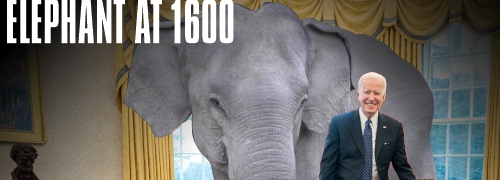INTRODUCTION
Abortion presents a profound moral issue on which Americans hold sharply conflicting views. Some believe fervently that a human person comes into being at conception and that abortion ends an innocent life. Others feel just as strongly that any regulation of abortion invades a woman's right to control her own body and prevents women from achieving full equality. Still others in a third group think that abortion should be allowed under some but not all circumstances, and those within this group hold a variety of views about the particular restrictions that should be imposed.
For the first 185 years after the adoption of the Constitution, each State was permitted to address this issue in accordance with the views of its citizens. Then, in 1973, this Court decided Roe v. Wade, 410 U. S. 113. Even though the Constitution makes no mention of abortion, the Court held that it confers a broad right to obtain one. It did not claim that American law or the common law had ever recognized such a right, and its survey of history ranged from the constitutionally irrelevant (e.g., its discussion of abortion in antiquity) to the plainly incorrect (e.g., its assertion that abortion was probably never a crime under the common law). After cataloging a wealth of other information having no bearing on the meaning of the Constitution, the opinion concluded with a numbered set of rules much like those that might be found in a statute enacted by a legislature.
Under this scheme, each trimester of pregnancy was regulated differently, but the most critical line was drawn at roughly the end of the second trimester, which, at the time, corresponded to the point at which a fetus was thought to achieve "viability," i.e., the ability to survive outside the womb. Although the Court acknowledged that States had a legitimate interest in protecting "potential life," it found that this interest could not justify any restriction on previability abortions. The Court did not explain the basis for this line, and even abortion supporters have found it hard to defend Roe's reasoning. One prominent constitutional scholar wrote that he "would vote for a statute very much like the one the Court end[ed] up drafting" if he were "a legislator," but his assessment of Roe was memorable and brutal: Roe was "not constitutional law" at all and gave "almost no sense of an obligation to try to be."
At the time of Roe, 30 States still prohibited abortion at all stages. In the years prior to that decision, about a third of the States had liberalized their laws, but Roe abruptly ended that political process. It imposed the same highly restrictive regime on the entire Nation, and it effectively struck down the abortion laws of every single State. As Justice Byron White aptly put it in his dissent, the decision represented the "exercise of raw judicial power," 410 U. S., at 222, and it sparked a national controversy that has embittered our political culture for a half century.
Eventually, in Planned Parenthood of Southeastern Pa. v. Casey, 505 U. S. 833 (1992), the Court revisited Roe, but the Members of the Court split three ways. Two Justices expressed no desire to change Roe in any way." Four others wanted to overrule the decision in its entirety. And the three remaining Justices, who jointly signed the controlling opinion, took a third position. Their opinion did not endorse Roe's reasoning, and it even hinted that one or more of its authors might have "reservations" about whether the Constitution protects a right to abortion. But the opinion concluded that stare decisis, which calls for prior decisions to be followed in most instances, required adherence to what it called Roe's "central holding" – that a State may not constitutionally protect fetal life before "viability" – even if that holding was wrong. Anything less, the opinion claimed, would undermine respect for this Court and the rule of law.
Paradoxically, the judgment in Casey did a fair amount of overruling. Several important abortion decisions were overruled in toto, and Roe itself was overruled in part." Casey threw out Roe's trimester scheme and substituted a new rule of uncertain origin under which States were forbidden to adopt any regulation that imposed an "undue burden" on a woman's right to have an abortion." The decision provided no clear guidance about the difference between a "due" and an "undue" burden. But the three Justices who authored the controlling opinion "callfed] the contending sides of a national controversy to end their national division" by treating the Court's decision as the final settlement of the question of the constitutional right to abortion."
As has become increasingly apparent in the intervening years, Casey did not achieve that goal. Americans continue to hold passionate and widely divergent views on abortion, and state legislatures have acted accordingly. Some have recently enacted laws allowing abortion, with few restrictions, at all stages of pregnancy. Others have tightly restricted abortion beginning well before viability. And in this case, 26 States have expressly asked this Court to overrule Roe and Casey and allow the States to regulate or prohibit pre-viability abortions.
Before us now is one such state law. The State of Mississippi asks us to uphold the constitutionality of a law that generally prohibits an abortion after the 15th week of pregnancy – several weeks before the point at which a fetus is now regarded as "viable" outside the womb. In defending this law, the State's primary argument is that we should reconsider and overrule Roe and Casey and once again allow each State to regulate abortion as its citizens wish. On the other side, respondents and the Solicitor General ask us to reaffirm Roe and Casey, and they contend that the Mississippi law cannot stand if we do so. Allowing Mississippi to prohibit abortions after 15 weeks of pregnancy, they argue, "would be no different than overruling Casey and Roe entirely." Brief for Respondents 48. They contend that "no half-measures" are available and that we must either reaffirm or overrule Roe and Casey. Brief for Respondents 50.
We hold that Roe and Casey must be overruled. The Constitution makes no reference to abortion, and no such right is implicitly protected by any constitutional provision, including the one on which the defenders of Roe and Casey now chiefly rely – the Due Process Clause of the Fourteenth Amendment. That provision has been held to guarantee some rights that are not mentioned in the Constitution, but any such right must be "deeply rooted in this Nation's history and tradition" and "implicit in the concept of ordered liberty." Washington v. Glucksberg, 521 U.S. 702, 721 (1997) (internal quotation marks omitted).
The right to abortion does not fall within this category. Until the latter part of the 20th century, such a right was entirely unknown in American law. Indeed, when the Four-teenth Amendment was adopted, three quarters of the States made abortion a crime at all stages of pregnancy. The abortion right is also critically different from any other right that this Court has held to fall within the Fourteenth Amendment's protection of "liberty." Roe's defenders characterize the abortion right as similar to the rights recognized in past decisions involving matters such as intimate sexual relations, contraception, and marriage, but abortion is fundamentally different, as both Roe and Casey acknowledged, because it destroys what those decisions called "fetal life" and what the law now before us describes as an "unborn human being."
Stare decisis, the doctrine on which Casey's controlling opinion was based, does not compel unending adherence to Roé's abuse of judicial authority. Roe was egregiously wrong from the start. Its reasoning was exceptionally weak, and the decision has had damaging consequences. And far from bringing about a national settlement of the abortion issue, Roe and Casey have enflamed debate and deepened division.
It is time to heed the Constitution and return the issue of abortion to the people's elected representatives. "The permissibility of abortion, and the limitations, upon it, are to be resolved like most important questions in our democracy: by citizens trying to persuade one another and then voting." Casey, 505 U. S., at 979 (Scalia, J., concurring in judgment in part and dissenting in part). That is what the Constitution and the rule of law demand.









